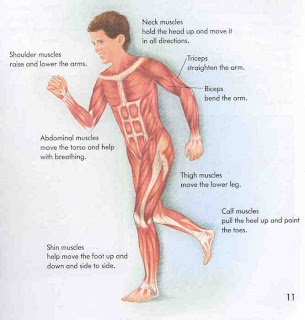This week in HSIE we are looking at the Muscular System.
An excellent explanation of the muscular system for kids is here.
BBC Bitesize also has clear defninitions and some interactives to work through.
You can click on the muscles here to get an explanation of the function it performs.
A movie especially for kids is right here.
Bill Nye looks at muscles and bones:
Why does exercise make us tired?
Test your knowledge using this timed comprehension activity!
For your workbook:
Heading: The Muscular System
Did you know you have more than 600 muscles in your body? They do everything from pumping blood throughout your body to help you lift your heavy backpack. You control some of your muscles, while others — like your heart — do their jobs without you thinking about them at all.
There are three different types of muscles in your body:
- smooth muscle
- cardiac muscle
- skeletal muscle
Smooth Muscle
- Is also called an involuntary muscle because you cannot control it.
- Your brain and body tell these muscles what to do without you even thinking about it.
- For example: Your esophagus, which pushes food into your stomach.
Cardiac Muscle
- This is the muscle that makes up your heart.
- The thick muscles around your heart contract to move blood around your body.
Skeletal Muscle
- Skeletal muscles are voluntary muscles, which means you can control what they do.
- For example: Your leg won't bend to kick the soccer ball unless you want it to.
- Skeletal muscles work with your bones to give your body power and strength.




















